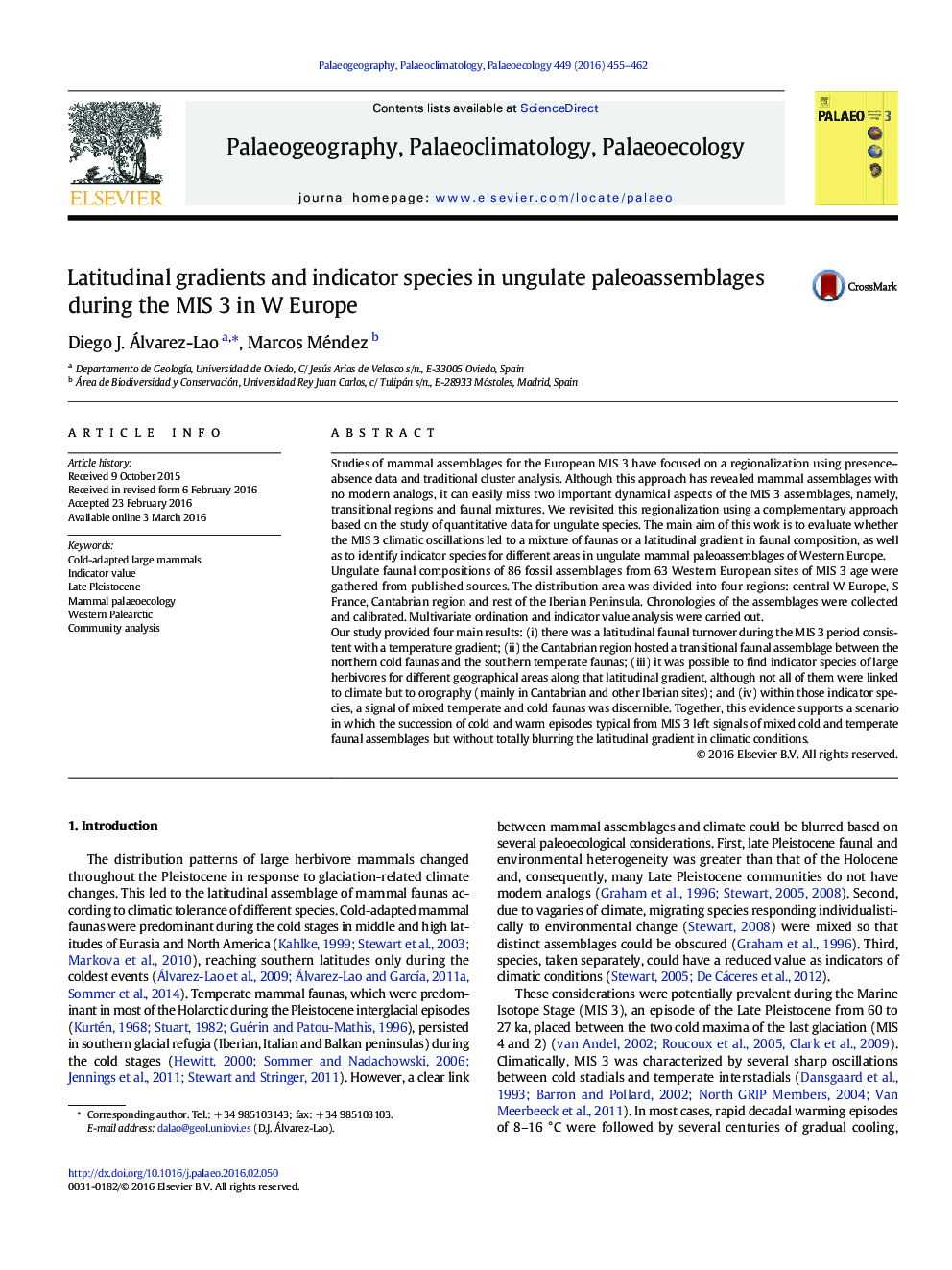| کد مقاله | کد نشریه | سال انتشار | مقاله انگلیسی | نسخه تمام متن |
|---|---|---|---|---|
| 4465778 | 1622142 | 2016 | 8 صفحه PDF | دانلود رایگان |
• We present a quantitative analysis of 86 MIS 3 ungulate assemblages of Western Europe.
• There was a latitudinal faunal turnover consistent with a temperature gradient.
• Cantabrian sites showed transitional features between northern and southern faunas.
• Indicator species were detected for different geographical areas along this gradient.
• Mixing of temperate and cold faunas was discernible within the latitudinal turnover.
Studies of mammal assemblages for the European MIS 3 have focused on a regionalization using presence–absence data and traditional cluster analysis. Although this approach has revealed mammal assemblages with no modern analogs, it can easily miss two important dynamical aspects of the MIS 3 assemblages, namely, transitional regions and faunal mixtures. We revisited this regionalization using a complementary approach based on the study of quantitative data for ungulate species. The main aim of this work is to evaluate whether the MIS 3 climatic oscillations led to a mixture of faunas or a latitudinal gradient in faunal composition, as well as to identify indicator species for different areas in ungulate mammal paleoassemblages of Western Europe.Ungulate faunal compositions of 86 fossil assemblages from 63 Western European sites of MIS 3 age were gathered from published sources. The distribution area was divided into four regions: central W Europe, S France, Cantabrian region and rest of the Iberian Peninsula. Chronologies of the assemblages were collected and calibrated. Multivariate ordination and indicator value analysis were carried out.Our study provided four main results: (i) there was a latitudinal faunal turnover during the MIS 3 period consistent with a temperature gradient; (ii) the Cantabrian region hosted a transitional faunal assemblage between the northern cold faunas and the southern temperate faunas; (iii) it was possible to find indicator species of large herbivores for different geographical areas along that latitudinal gradient, although not all of them were linked to climate but to orography (mainly in Cantabrian and other Iberian sites); and (iv) within those indicator species, a signal of mixed temperate and cold faunas was discernible. Together, this evidence supports a scenario in which the succession of cold and warm episodes typical from MIS 3 left signals of mixed cold and temperate faunal assemblages but without totally blurring the latitudinal gradient in climatic conditions.
Journal: Palaeogeography, Palaeoclimatology, Palaeoecology - Volume 449, 1 May 2016, Pages 455–462
